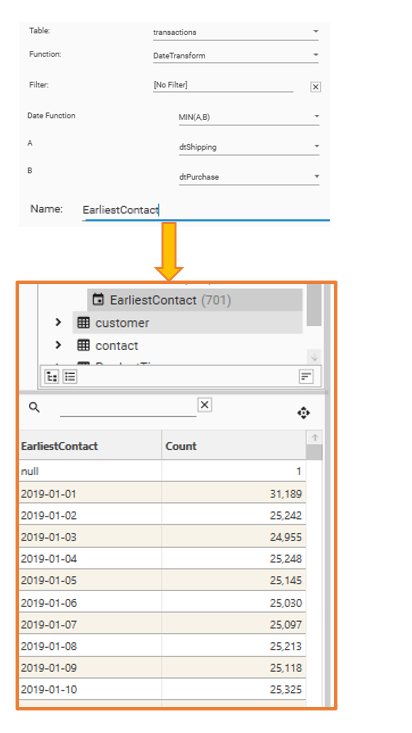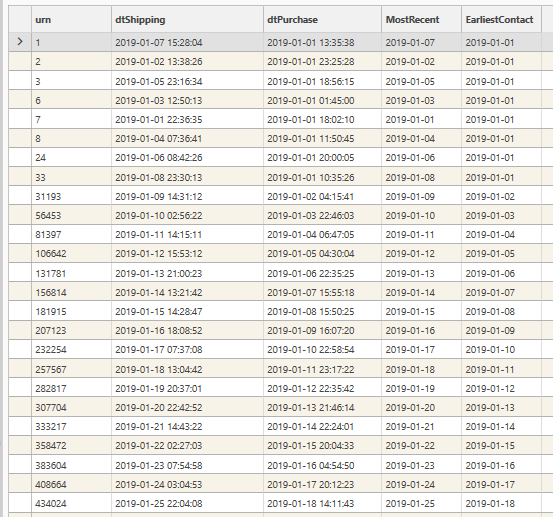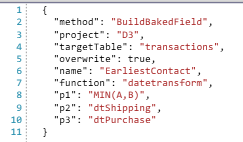Date Transform: MIN(A,B)
Returns the earliest of two dates
Purpose
Use this function to:
- Identify which of two events occurred first
Return Value
| Property | Value |
|---|---|
| FieldType | Date |
| FieldSize | |
| DataType | Discrete |
| DataSize | Short |
Example Return Value: 2021-09-08
Parameters
| Parameter | JSON | Description |
|---|---|---|
| Table | “targetTable”: “MyTableName” | The target table on which the new field will be created |
| Filter | “dataset”: {DataSet_JSON} | Optional. If a filter is applied, records not in the filter Recordset will be returned as null. |
| DateTimeFunction | “p1”: “MIN(A,B)” | MIN(A,B) |
| A | “p2”: “DateTimeFieldName” “p2”: “DateFieldName” “p2”: “#YYYY-MM-DD HH:MM:SS” “p2”: “#YYYY-MM-DD” | Required. Date formatted data. Supports:
|
| B | “p3”: “DateTimeFieldName” “p3”: “DateFieldName” “p3”: “#YYYY-MM-DD HH:MM:SS” “p3”: “#YYYY-MM-DD” | Required. Date formatted data. Supports:
|
JSON Sample
Usage Notes
See also MAX(A,B)
Example
| Example | Details |
|---|---|
| Description | Determine which event occurred first |
| Input |
|
| Sample |  |

